3.1: Introduction and Historical Context
- Page ID
- 54328
3.3.1 What is the renaissance?
The term Renaissance literally means “rebirth.” As a historical and artistic era in Western Europe, the Renaissance spanned from the late 1400s to the early 1600s. The Renaissance was a time of waning political power in the church, somewhat as a result of the Protestant Reformation. Also during this period, the feudal system slowly gave way to developing nationstates with centralized power in the courts. This period was one of intense creativity and exploration. It included such luminaries as Leonardo da Vinci, Christopher Columbus, Ferdinand Magellan, Nicolaus Copernicus, and William Shakespeare. The previous medieval period was suppressive, firmly established, and pious. The Renaissance however, provided the thinkers and scholars of the day with a revival of Classical (Greek and Roman) wisdom and learning after a time of papal restraint. This “rebirth” laid the foundation for much of today’s modern society, where humans and nature rather than religion become the standard for art, science, and philosophy.
The School of Athens (1505), Figure 3.1.1, by Raphael demonstrates the strong admiration, influence, and interest in previous Greek and Roman culture. The painting depicts the Greek philosophers Aristotle and Plato (center), with Plato depicted in the likeness of Leonardo da Vinci.
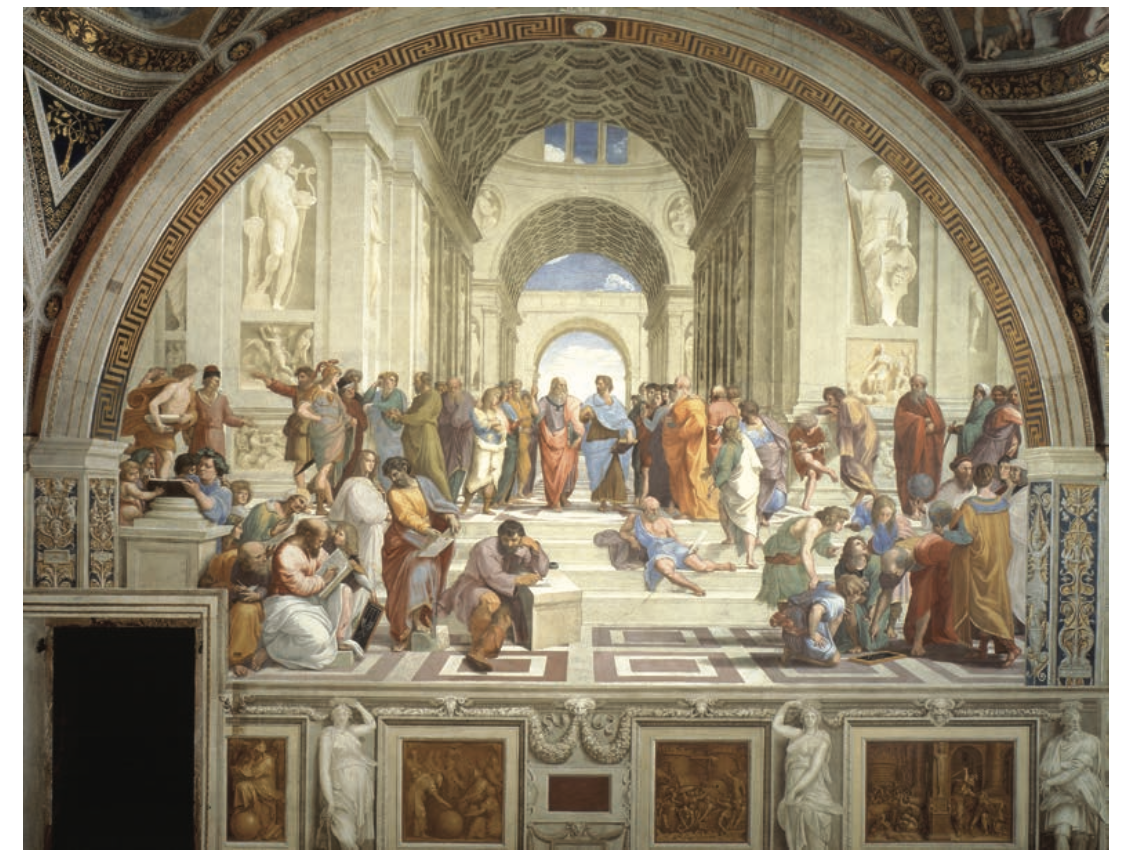
3.3.2 Renaissance Timeline
| Events in History | Events in Music and Arts |
|
1440: Gutenberg’s printing press 1453: Fall of Constantinople 1456: Gutenberg Bible 1492: Columbus reaches America 1517: Martin Luther nails The Ninety-Five Theses on Wittenberg Church Door 1545-1563: Council of Trent 1588: Spanish Armada defeated |
c. 1475: Josquin Desprez, Ave Maria 1504 Michelangelo, David c. 1505: Raphael, School of Athens, Madonna del Granduca 1563: Giovanni Pierluigi da Patestrina, Pope Marcellus Mass c. 1570: Titian, Venus and the Lute Player 1597: Shakespeare, Romeo and Juliet |
Occurrences at the end of the Middle Ages accelerated a series of intellectual, social, artistic, and political changes and transformation that resulted in the Renaissance.
By the 1500s, Catholic liturgical music had become extremely complex and ornate. Composers such as Josquin des Prez and Palestrina were composing layered Masses that utilized musical textures such as polyphony and imitative counter- point (more on these techniques later). The mass is a sacred choral composition historically composed as worship liturgy.
The complexity of the music in the Catholic Mass garnered criticism from Martin Luther, a Roman Catholic priest and the eventual father of the Protestant Reformation, who complained that the meaning of the words of the mass, formal worship liturgy, were lost in the beautiful polyphony of the music. Also, Catholic Masses were always performed in Latin, a language seldom used outside the church. Early Protestant hymns stripped away contrapuntal textures, utilized reg- ular beat patterns, and set biblical texts in German. Martin Luther himself penned a few hymns, many of which the great classic composer Johann Sebastian Bach would revisit about 125 years later.
3.3.3 Renaissance Humanism
The Humanism movement is one which expressed the spirit of the Renaissance era that took root in Italy after eastern European scholars fled from Constantinople to the region bringing with them books, manuscripts, and the traditions of Greek scholarship. Humanism is a major paradigm shift from the ways of thought during the medieval era where a life of penance in a feudal system was considered the accepted standard of life. As a part of this ideological change there was a major intellectual shift from the dominance of scholars/clerics of the medieval period (who developed and controlled the scholastic institutions) to the secular men of letters. Men of letters were scholars of the liberal arts who turned to the classics and philosophy to understand the meaning of life.
Humanism has several distinct attributes as it focuses on human nature, its diverse spectrum, and all its accomplishments. Humanism syncretizes all the truths found in different philosophical and theological schools. It emphasizes and focuses on the dignity of man, and studies mankind’s struggles over nature.
Medival vs. Renaissance
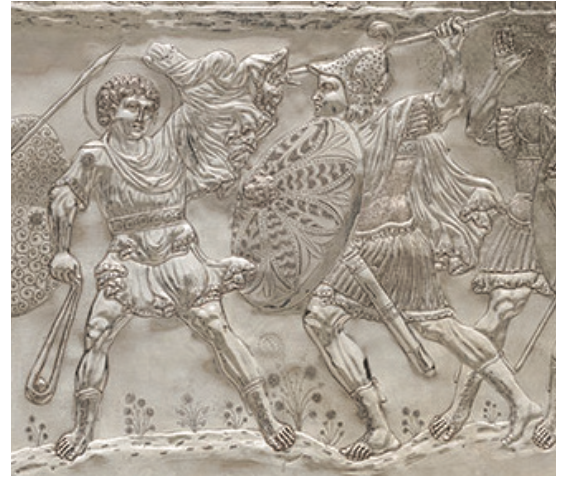
license | OASC
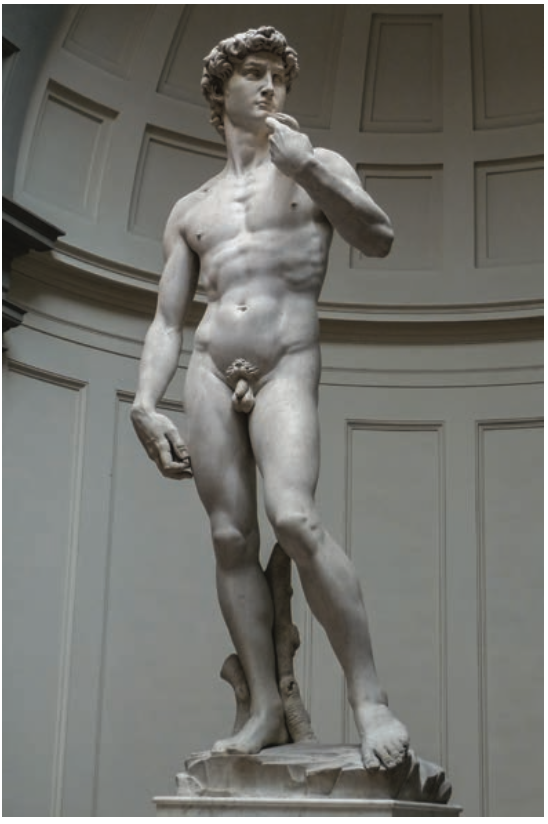
Commons license | CC BY 3.0
3.3.4 Rebirth of Ancient Civilizations
Renaissance
Predecessors to the Renaissance and the Humanist movement include Dan- te and Petrarch. In 1452, after the fall of Constantinople, there was considerable boost in the Humanist movement. Humanism was accelerated by the invention of
the printing press, which permitted mass reproduction of the classical text—once only found in hand-written manuscripts—the availability of literature improved immensely. Thus, literacy among the common people increased dramatically. The scholastic and intellectual stimulation of the general public facilitated by Human- ism initiated a power and knowledge shift from the land-owning upper class and the church to the individual. This shift facilitated and contributed to the beginning of the Reformation. As mentioned above, Martin Luther was a leading religious re- former who challenged the authority of the central Catholic Church and its role in governance, education, and religious practices. Like most other European groups of the era, the Humanists at the time, were divided in their support of the reforma- tion and counter-reformation movements.
3.3.5 Symmetry and Perspective in Art
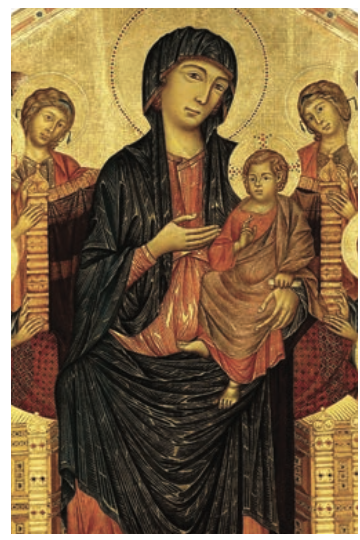
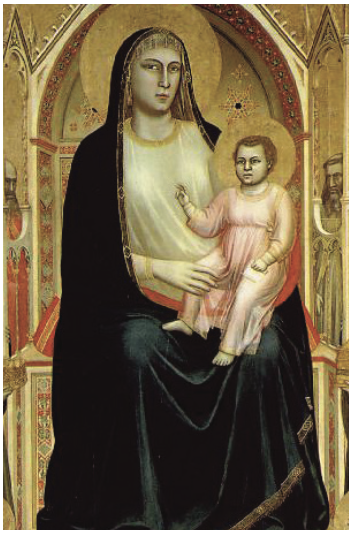
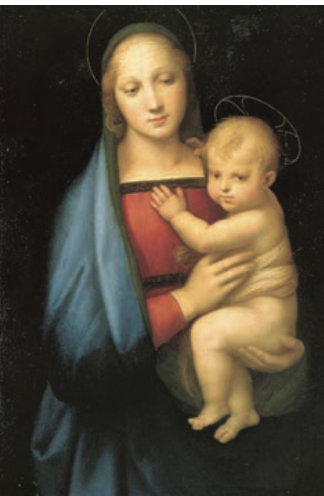
The shift away from the power and authority of the church between the Medieval period and the Renaissance period is not only evident in music but is also found in the visual arts. Artists and authors of the Renaissance became interested in classical mythology and literature. Artists created sculptures of the entire hu- man body, demonstrating a direct lineage from ancient Greek culture to the Renaissance. In the Middle Ages, such depictions of the nude body were thought to be objects of shame or in need of cover. Artists of the Middle Ages were more focused on religious symbolism than the lifelike representation created in the Renaissance era. Medieval artists perceived the canvas as a flat medium/surface on which subjects are shown very two dimensionally. Painters of the Renaissance were more interested in portraying real life imagery in three dimensions on their canvas. See the evolution of the Virgin Mary from the Medieval period to the Renaissance period
In Figures 3.1.4, Figure 3.1.5, figure 3.1.6 above. You can see the shift from the religious symbolism to the realistic depiction of the human body features.
Raphael and Leonardo da Vinci focused on portraying realism, utilizing linear perspective and creating illusions of space in their works. A geometric system was effectively used to create space and the illusion of depth. This shift from the religious symbolism to the real portrayal of the human is representative of the decline of the church in the arts as well as music. Music outside of the church, secular mu- sic, increased in importance.
3.3.6 The Protestant reformation
In the Middle Ages, people were thought to be parts of a greater whole: members of a family, trade guild, nation, and church. At the beginning of the Renaissance, a shift in thought led people to think of themselves as individuals, sparked by Martin Luther’s dissent against
several areas and practices within the Catholic Church. On October 31, 1517, Luther challenged the Catholic Church by posting The Ninety-Five Theses on the doors of the Castle Church in Wittenberg, Germany. The post stated Luther’s various beliefs and interpretations of Biblical doctrine which challenged the many practices of the Catholic Church in the early 1500s. Luther felt that educated/literate believers should be able to read the scriptures and become individual church entities themselves. With the invention of the Gutenberg Press, copies of the scriptures and hymns became available to the masses which helped spread the Reformation. The empowerment of the common worshiper or middle class continued to fuel the loss of authority of the church and upper class.
3.3.7 Gutenberg Press
Few inventions have had the significance to modernization as the Gutenberg Press. Up until the invention of the press, the earliest forms of the books with edge bounding, similar to the type we have today, called codex books were hand pro- duced by monks. This process was quite slow, costly, and laborious, often taking months to produce smaller volumes and years to produce a copy of the Bible and hymn books of worship.
Gutenberg’s invention of a much more efficient printing method made it possible to distribute a large amount of printed information at a much accelerated and labor efficient pace. The printing press enabled the printing of hymn books for the
middle class and further expanded the involvement of the middle class in their worship service-a key component in the reformation. Gutenberg’s press served as a major engine for the distribution of knowledge and contributed to the Renaissance, Scientific Revolution, and Protestant reformation.
3.3.8 Columbus’s voyage
Columbus’s discovery of the New World in 1492 also contributed to the spirit and spread of the Humanist movement. The discovering of new land and the potential for colonization of new territory added to the sense of infallibility and ego of the human race. The human spirit of all social classes was invigorated. The invigoration of the middle class influenced the arts and the public’s hunger for art and music for the vast middle class population.


